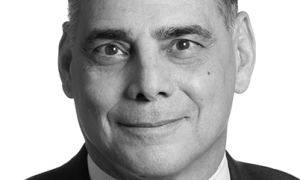'Homeland Security System Actually Works." No one head lined coverage of the 9/11 Commission report that way. But they should have.
Of course, the commissioners couldn't bear to say it outright. And few in the press could read it between the lines. But the panel's report pretty much endorsed everything that's been done since 9/11 to make us safer.
On Sunday afternoon, we got another reminder that maybe some folks in Washington know what they're doing. The specific alerts - warning of potential terrorist attacks against key financial institutions in New York and other targets in Washington - showed that we are much better at identifying and responding to these threats than we were just three years ago.
Winston Churchill once said that Americans will always do the right thing . . . but only after they have exhausted all other options. He was a smart guy. After ignoring and fiddling with the threat of transnational terrorism for over half a decade, America finally got serious after 9/11.
The events leading up to Sunday's announcement from Homeland Security Czar Tom Ridge were most significant. The key decision didn't come as the result of Cabinet members huddling around an Oval Office coffee table and swapping Post-It notes. We were warned because a bunch of men and women tasked with protecting the homeland were out there doing their day jobs.
It all started with a "preemptive" strategy that calls for getting the terrorists before they get us. We found the terrorists because we practice international cooperation where it counts - working with friends and allies to ensure mutual security. In this case, the big break came from joint U.S.-Pakistani cooperation that rooted out at least two key al Qaeda operatives.
Intelligence from computer records seized during the arrests in Pakistan was shared among the intelligence community. And it was shared within hours. Not only was it passed around, but representatives from intelligence and law enforcement got in one room and talked about it - something that would actually have been illegal before 9/11 and the passage of the Patriot Act.
Effectively sharing intelligence and connecting dots was one of the most strident recommendations of the 9/11 report. It's good to see Washington isn't waiting to put the principle into practice.
By Friday night, the Homeland Security Operations Center in Washington, D.C., had come alive. It's nothing sexy, just a nondescript room crammed with computers and flat-panel displays in the department's headquarters on Nebraska Avenue. But nothing like the center existed before 9/11. In those days, federal officials from across the government had no place they could go and coordinate a response to an imminent terrorist threat. Now they do . . . and they did.
Importantly, those federal officials did more than talk amongst themselves. They brought in key state and city representatives from the get-go, as well as CEOs from Wall Street and other commercial centers.
Even more remarkably, everyone knew what to do. There was no contentiousness, no complaining, no confusion. New precautions were ordered.
All this was done while Congress was away, without the president having to tell everyone what do, and indeed, with so little fanfare that the press didn't even know it was happening until an hour before Ridge made the announcement that the capital was going to "orange." And, you know what? That's the way it should be.
Perhaps most important, Ridge came out and told us what he is doing. The color-coded Homeland Security Advisory system created after 9/11 has rightly been criticized as a blunt instrument. Ridge's Sunday announcement was a vast improvement.
A good warning has to be recognizable, credible and actionable. Sunday's warning was all three.
The rules are simple: Tell Americans what you can, when you can - and let them live their lives. That's what Homeland Security did, and it was the right thing to do.
There is little room for complacency. There is still much to be done to make America free and safe, but Ridge's warning was a step in the right direction.
The terrorists we face are a dangerous enemy. But they're not 10 feet tall. They can be beaten. All we need is the courage, the confidence and the system to do the right thing.
James Jay Carafano is senior research fellow in defense and homeland security at The Heritage Foundation.
First appeared in the New York Post

